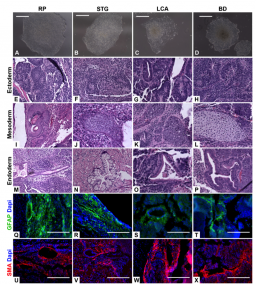
The purpose of this study was to determine whether a xeno-free synthetic cell culture surface (Synthemax™) could be used to aid in the production and subsequent retinal specific differentiation of clinical grade induced pluripotent stem cells (iPSCs). iPSCs were generated using adult somatic cells via infection with either a single excisable lentiviral vector or 4 separate non-integrating Sendai viruses driving expression of the transcription factors OCT4, SOX2, KLF4, and c-MYC. Following viral transduction cells underwent prototypical morphological changes resulting in the formation of iPSC colonies large enough for manually isolation and passage at 3-4 weeks post-infection. Both normal and disease specific iPSCs expressed markers of pluripotency and were found to be capable of making tissues of all 3 germ layers. When subjected to our established retinal differentiation protocol, a significant proportion of the xeno-free substrate-derived cells expressed retinal cell markers. Synthemax™ cell culture substrates provide a useful surface for the xeno-free production, culture, and differentiation of adult somatic cell derived iPSCs. These findings demonstrate the potential utility of these surfaces for the production of clinical grade retinal neurons for transplantation and induction of retinal regeneration.
